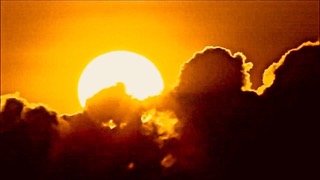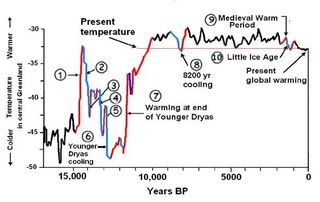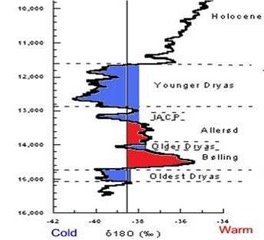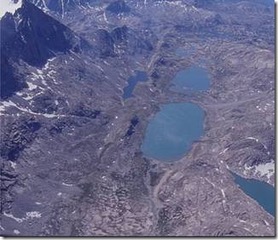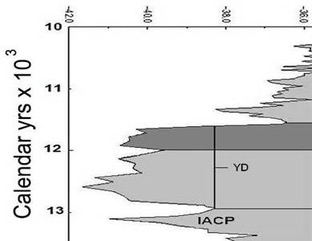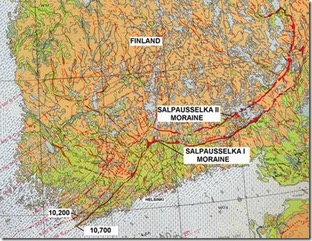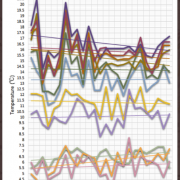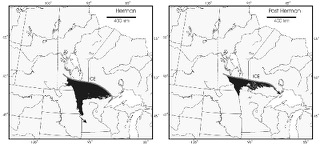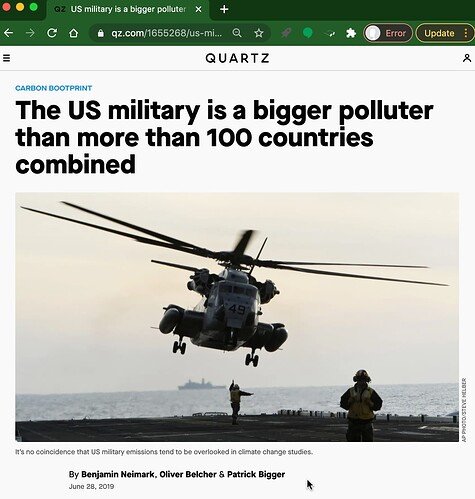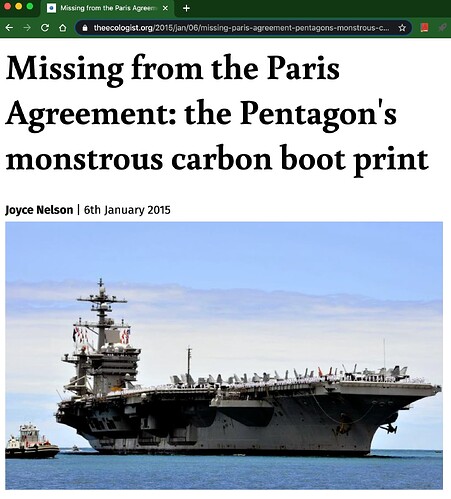Below is a message I posted to the LPSF list and others back in 2020
that addresses this argument of unprecedented recent temperature rise. This
warming has not correlated well with human emissions of carbon dioxide and
other “greenhouse gases”. There are more details on this in the film:
https://www.youtube.com/watch?v=oYhCQv5tNsQ
<maxresdefault.jpeg>
The Great Global Warming Swindle - Full Documentary HD
https://www.youtube.com/watch?v=oYhCQv5tNsQ
youtube.com https://www.youtube.com/watch?v=oYhCQv5tNsQ
https://www.youtube.com/watch?v=oYhCQv5tNsQ
Love & Liberty,
((( starchild )))
Begin forwarded message:
*From: *Starchild sfdreamer@earthlink.net
*Subject: *[bayareafaeries] Rapid, dramatic climate change the media
are ignoring?
*Date: *March 8, 2020 at 9:14:43 PM PDT
*To: *LPSF Discussion List lpsf-discuss@yahoogroups.com, Bay Area
Faeries bayareafaeries@groups.queernet.org, Bay Area Liberty <
ba-liberty@yahoogroups.com>, LibertarianHorizons@groups.io, SFBay
Cannabis Community List SFBayCannabisCommunity@yahoogroups.com,
CALibs@yahoogroups.com, LeftLibertarian2@yahoogroups.com,
bayareapatriots2@yahoogroups.com
Earth’s climate has been changing as long as the planet has existed,
and the planet has been both colder and warmer at various times in the past
than it is now. Human activity played essentially zero role in most of
these changes, since they happened before the industrial era. These facts
are not controversial, but they tend to be downplayed in media discussions
of climate change and how it allegedly presents a serious threat to humans
and the planet.
When I’ve pointed out this long history of “natural”
(non-human-caused) climate change to folks who believe the mainstream
narrative that human activity is causing major climatic change now and that
this is a major problem, a response I’ve often gotten is that this
time is different because climate change in the past has never been as
rapid or dramatic as it has recently. While that point seems to be
taken more on faith than on any particular knowledge of past temperature
records, it has been difficult to dispute because the temperature record of
Earth’s climate history is usually framed in long periods of geological
time rather than looking at what temperature changes occurred in a few
brief decades.
The article below, however, discusses scientific findings based on
studying the isotopes in Greenland ice core samples which show that some of
the global warming that took place thousands of years ago was more
rapid and dramatic* than recent global warming allegedly caused by
humans*:
“The Younger Dryas is the longest and coldest of several very abrupt
climatic changes that took place near the end of the late Pleistocene.
Among these abrupt changes in climate were: (1) sudden global warming
14,500 years ago (Fig. 1) that sent the immense Pleistocene ice sheets into
rapid retreat, (2) several episodes of climatic warming and cooling between
~14,400 and 12,800 years ago, (3) sudden cooling 12,800 years ago at the
beginning of the Younger Dryas, and (4) ~11,500 years ago, abrupt
climatic warming of up to 10º C in just a few decades. Perhaps the
most precise record of late Pleistocene climate changes is found in the ice
core stratigraphy of the Greenland Ice Sheet Project (GISP) and the
Greenland Ice Core Project (GRIP). The GRIP ice core is especially
important because the ages of the ice at various levels in the core has
been determined by the counting down of annual layers in the ice, giving a
very accurate chronology, and climatic fluctuations have been determined by
measurement of oxygen isotope ratios. Isotope data from the GISP2
Greenland ice core suggests that Greenland was more than ~10°C colder
during the Younger Dryas and that the sudden warming of 10° ±4°C that ended
the Younger Dryas occurred in only about 40 to 50. years.” [emphasis
added]
By way of comparison, advocates of Anthropogenic Global Warming (AGW)
theory (the idea that humans are responsible for global warming) are
predicting less warming than this over a longer time period even
if none of their recommendations to combat global warming are followed. The
International Energy Agency (IEA) recently predicted we’re “on track for
about 3 degrees Celsius of warming by 2100”, while the Intergovernmental
Panel on Climate Change (IPCC) predicts warming of about 4*° *Celsius
by 2100 in its “worse case” scenario of coal use growing dramatically
during the 21st century – an outcome that many now view as
unrealistic (see
Climate Change Worst-Case Scenario Now Looks Unrealistic
).
Again, that’s 4° of warming over 80 years being predicted by AGW
theory proponents as the worst case scenario if humans continue to burn
fossil fuels without regard to climate change, versus 10**° of
warming that occurred historically over a 40 or 50 year period some 11,500
years ago – if you trust the science.
Also of note is the graph accompanying the story, which shows in
dramatic visual terms how insignificant recent warming is in comparison to
this historical warming.
Now to be clear, the point is not that 3 or 4 degrees of global
warming in the next 80 years would not be disruptive. I’m sure it would be,
to both the environment and the economy. There might be good
reasons to try to tamper with Earth’s climate in order to prevent such a
change.
But this evidence of more rapid dramatic warming having occurred in
the past suggests that even if the Earth does get 3 or 4 degrees warmer by
2100, it would not herald irreversible doom as some alarmists would have us
believe. The science is telling us that the planet warmed more
rapidly in the past during a shorter time frame, and then
temperatures eventually more or less leveled out. Earth didn’t just
continue to get warmer and warmer in a self-perpetuating, out-of-control
cycle.
Another important thing to understand is that scientists aren’t sure
what caused the rapid warming that ended the Younger Dryas period.
This lack of understanding of “natural” causes of climate change suggests
that if whatever caused the rapid warming 11,500 years ago, also caused the
milder warming the Earth has experienced recently, we wouldn’t know.
The assumption that recent warming must be due to human activity
because “nothing like this has ever happened before”, does not accurately
reflect the historical temperature record.
All this is of course just my take on the data presented below. I’m
interested in hearing from AGW proponents who have a good response to this.
If you know one, please invite them to comment!
Love & Liberty,
((( starchild )))
Begin forwarded message:
https://wattsupwiththat.com/2012/06/19/the-intriguing-problem-of-the-younger-dryaswhat-does-it-mean-and-what-caused-it/
The Intriguing Problem Of The Younger Dryas—What Does It Mean And What
Caused It?
Anthony Watts https://wattsupwiththat.com/author/wattsupwiththat/ / June
19, 2012
https://wattsupwiththat.com/2012/06/19/the-intriguing-problem-of-the-younger-dryaswhat-does-it-mean-and-what-caused-it/
This is a follow up posting to Younger Dryas -The Rest of the Story!
http://wattsupwiththat.com/2012/06/16/younger-dryas-the-rest-of-the-story/
http://wattsupwiththat.com/2012/06/16/younger-dryas-the-rest-of-the-story/
Younger Dryas -The Rest of the Story!
WUWT readers may recall this recent story: New evidence of Younger
Dryas extraterrestrial impact The story below…
http://wattsupwiththat.com/2012/06/16/younger-dryas-the-rest-of-the-story/
Guest post by Don J. Easterbrook
Dept. of Geology, Western Washington University.
The Younger Dryas was a period of rapid cooling in the late
Pleistocene 12,800 to 11,500 calendar years ago. It followed closely on the
heels of a dramatically abrupt warming that brought the last Ice Age to a
close (17,500 calendar years ago), lasted for about 1,300 years, then ended
as abruptly as it started. The cause of these remarkably sudden climate
changes has puzzled geologists and climatologists for decades and despite
much effort to find the answer, can still only be considered enigmatic.
The Younger Dryas interruption of the global warming that resulted in
the abrupt, wholesale melting of the huge late Pleistocene ice sheets was
first discovered in European pollen studies about 75 years ago. Terrestrial
plants and pollen indicate that arboreal forests were replaced by tundra
vegetation during a cool climate. This cool period was named after the pale
yellow flower Dryas octopetella, an arctic wildflower typical of cold,
open, Arctic environments. The Younger Dryas return to a cold, glacial
climate was first considered to be a regional event restricted to Europe,
but later studies have shown that it was a world-wide event. The problem
became even more complicated when oxygen isotope data from ice cores in
Antarctica and Greenland showed not only the Younger Dryas cooling, but
several other shorter cooling/warming events, now known as
Dansgaard-Oerscher events.
The Younger Dryas is the longest and coldest of several very abrupt
climatic changes that took place near the end of the late Pleistocene.
Among these abrupt changes in climate were: (1) sudden global warming
14,500 years ago (Fig. 1) that sent the immense Pleistocene ice sheets into
rapid retreat, (2) several episodes of climatic warming and cooling between
~14,400 and 12,800 years ago, (3) sudden cooling 12,800 years ago at the
beginning of the Younger Dryas, and (4) ~11,500 years ago, abrupt climatic
warming of up to 10º C in just a few decades. Perhaps the most precise
record of late Pleistocene climate changes is found in the ice core
stratigraphy of the Greenland Ice Sheet Project (GISP) and the Greenland
Ice Core Project (GRIP). The GRIP ice core is especially important because
the ages of the ice at various levels in the core has been determined by
the counting down of annual layers in the ice, giving a very accurate
chronology, and climatic fluctuations have been determined by measurement
of oxygen isotope ratios. Isotope data from the GISP2 Greenland ice core
suggests that Greenland was more than~10°C colder during the Younger Dryas
and that the sudden warming of 10° ±4°C that ended the Younger Dryas
occurred in only about 40 to 50 years.
<clip_image002.jpeg>
http://wattsupwiththat.files.wordpress.com/2012/06/clip_image0021.jpg
Figure 1. Temperature fluctuations over the past 17,000 years showing
the abrupt cooling during the Younger Dryas. The late Pleistocene cold
glacial climate that built immense ice sheets terminated suddenly about
14,500 years ago (1), causing glaciers to melt dramatically. About 12,800
years ago, after about 2000 years of fluctuating climate (2-4),
temperatures plunged suddenly (5) and remained cool for 1300 years (6).
About 11,500 years ago, the climate again warmed suddenly and the Younger
Dryas ended (7).
Radiocarbon and cosmogenic dating of glacial moraines in regions all
over the world and abrupt changes in oxygen isotope ratios in ice cores
indicate that the Younger Dryas cooling was globally synchronous. Evidence
of Younger Dryas advance of continental ice sheets is reported from the
Scandinavian ice sheet, the Laurentide ice sheet in eastern North America,
the Cordilleran ice sheet in western North America, and the Siberian ice
sheet in Russia. Alpine and ice cap glaciers also responded to the abrupt
Younger Dryas cooling in both the Northern and Southern hemispheres, e.g.,
many places in the Rocky Mts. of the U.S. and Canada, the Cascade Mts. of
Washington, the European Alps, the Southern Alps of New Zealand, and the
Andes Mts. in Patagonia of South America.
<clip_image004.jpeg>
http://wattsupwiththat.files.wordpress.com/2012/06/clip_image0041.jpg
Figure 2. Temperature fluctuations over the past 15,000 years showing
the abrupt cooling during the Younger Dryas and other warming and cooling
periods, the Oldest Dryas (cool), Bölllng (warm), Older Dryas (cool),
Allerød (warm), InterAllerød (cool), and Younger Dryas (cool).
<clip_image006.jpeg>
http://wattsupwiththat.files.wordpress.com/2012/06/clip_image006.jpg
Figure 3. Oxygen isotope record from the Greenland ice core showing
an abrupt temperature drop 12,800 years ago, 1300 years of cool climate,
and sudden warming 11,500 years ago.
The Younger Dryas had multiple glacial advances and retreats
The Younger Dryas was not just a single climatic event. Late
Pleistocene climatic warming and cooling not only occurred before and after
the YD, but also within it. All three major Pleistocene ice sheets, the
Scandinavian, Laurentide, and Cordilleran, experienced double
moraine-building episodes, as did a large number of alpine glaciers.
Multiple YD moraines of the Scandinavian Ice Sheet have long been
documented and a vast literature exists. The Scandinavian Ice Sheet
readvanced during the YD and built two extensive end moraines across
southern Finland, the central Swedish moraines, and the Ra moraines of
southwestern Norway(Fig. 4). 14C dates indicate they were separated
by about 500 years.
<clip_image008.jpeg>
http://wattsupwiththat.files.wordpress.com/2012/06/clip_image008.jpg
Figure 4. Double Younger Dryas moraines of the Scandinavian Ice Sheet.
Among the first multiple YD moraines to be recognized were the Loch
Lomond moraines of the Scotish Highlands. Alpine glaciers and icefields in
Britain readvanced or re-formed during the YD and built extensive moraines
at the glacier margins. The largest YD icefield at this time was the
Scotish Highland glacier complex, but smaller alpine glaciers occurred in
the Hebrides and Cairngorms of Scotland, in the English Lake District, and
in Ireland. The Loch Lomond moraines consist of multiple moraines.
Radiocarbon dates constrain the age of the Loch Lomond moraines between
12.9 and 11.5 calendar years ago.
Multiple Younger Dryas moraines of alpine glaciers also occur
throughout the world, e.g., the European Alps, the Rocky Mts., Alaska, the
Cascade Range, the Andes, the New Zealand Alps, and elsewhere.
<clip_image010.jpeg>
http://wattsupwiththat.files.wordpress.com/2012/06/clip_image010.jpg
Figure 5. Double Younger Dryas moraines at Titcomb Lakes in the Wind
River Range of Wyoming.
Implications
The multiple nature of YD moraines in widely separated areas of the
world and in both hemispheres indicates that the YD consisted of more than
a single climatic event and these occurred virtually simultaneously
worldwide. Both ice sheets and alpine glaciers were sensitive to the
multiple YD phases. The GISP2 ice core shows two peaks within the YD that
match the glacial record. The absence of a time lag between the N and S
Hemispheres glacial fluctuations precludes an ocean cause and is not
consistent with the North Atlantic Deep Ocean Water hypothesis for the
cause of the Younger Dryas, nor with a cosmic impact or volcanic origin.
Both 14C and 10Be production rates in the upper atmosphere changed
during the YD. 14C and 10Be are isotopes produced by collision of
incoming radiation with atoms in the upper atmosphere. The change in their
production rates means that the Younger Dryas was associated with changes
in the amount of radiation entering the Earth’s atmosphere, leading to the
intriguing possibility that the YD was caused by solar fluctuations.
Why the Younger Dryas is important
What can we learn from all this? The ice core isotope data were hugely
significant because they showed that the Younger Dryas, as well as the
other late Pleistocene warming and cooling events could not possibly have
been caused by slow, Croll-Milankovitch orbital forcing, which occurs over
many tens of thousands of years. The ice core isotope data thus essentially
killed the Croll-Milankovitch theory as the cause of the Ice Ages.
In an attempt to save the Croll-Milankovitch theory, Broecker and
Dention (1990) published a paper postulating that large amounts of fresh
water discharged into the north Atlantic about 12,800 years ago when
retreat of the Laurentide ice sheet allowed drainage of glacial Lake
Agassiz to spill eastward into the Atlantic Ocean. They proposed that this
large influx of fresh water might have stopped the formation of descending,
higher-density water in the North Atlantic, thereby interrupting deep-water
currents that distribute large amounts of heat globally and initiating a
short-term return to glacial conditions. If indeed that was the case, then
the Younger Dryas would have been initiated in the North Atlantic and
propagated from there to the Southern Hemisphere and the rest of the world.
Since that would take time, it means that the YD should be 400-1000 years
younger in the Southern Hemisphere and Pacific areas than in the Northern
Hemisphere. However, numerous radiocarbon and cosmogenic dates of the
Younger Dryas all over the world indicate the cooling was globally
synchronous. Thus, the North Atlantic deep current theory is not consistent
with the chronology of the Younger Dryas.
The climatic fluctuations before and after the Younger Dryas, as well
as the fluctuations within it, and the duration of these changes are not
consistent with a single event cause of the YD. Neither cosmic impact or
volcanic eruptions could produce the abrupt, multiple climatic changes that
occurred during the late Pleistocene.
On Feb 19, 2025, at 8:21 PM, Brendan McMillion < >>>>> brendanmcmillion@gmail.com> wrote:
Global average temperature for the past 2k years can be measured
relatively accurately:
Temperature record of the last 2,000 years - Wikipedia
You can see in the graph in this link that the temperature increase
since 1850 is so dramatic that it is double any naturally-occurring
temperature change in the past 2k years.
Though there are also estimates of the global average temperature that
go back 150k years:
Analysis: Is it actually hotter now than any time in the last 100,000 years? | PBS News
In this scale, the past 150 years are a vertical tick. No other time
in the past 150k years has the temperature increased so much so quickly. So
there’s no empirical evidence of natural climate change this quick, or any
natural cause that can realistically point to as an explanation.
We know causally that increased co2 concentration in the atmosphere
will increase global temperatures because of the greenhouse effect. And
when you graph co2 concentration against global temperature, you see they
correlate exactly:
If carbon dioxide hits a new high every year, why isn’t every year hotter than the last? | NOAA Climate.gov
On Wed, Feb 19, 2025 at 7:48 PM Starchild sfdreamer@earthlink.net >>>>> wrote:
I try to keep an open mind about it, but am definitely on the
skeptical side of the fence where the Anthropogenic Global Warming (AGW)
theory is concerned. I’m always happy to discuss, but would encourage
anyone wishing to do so to watch the full documentary, and don’t be put off
by the inflammatory title and opening sequence – it makes a much better
case than a cursory glance at those things would suggest.
I fully agree that the climate has been changing – for as long as the
Earth has been around. If the causes of past swings of cooling and warming
are not fully understood, which I don’t believe they are, I don’t think
natural causes can be ruled out as the main drivers of recently observed
climate change.
Pollution can indeed by seen as a form of trespass and violation of
the Non-Aggression Principle, at least when it reaches a certain threshold.
Like most things, it’s a matter of degree. A person exhaling carbon dioxide
by breathing is adding CO2 to the atmosphere as surely as a smog-belching
factory, just on a much smaller scale. I’m dubious of whether there’s any
clear and simple application of property rights that could solve air
pollution issues, as nice as it would be to have such a tidy libertarian
solution.
Love & Liberty,
((( starchild )))
On Feb 19, 2025, at 5:09 PM, Brendan McMillion < >>>>>> brendanmcmillion@gmail.com> wrote:
Hi Starchild
I’m happy to talk through any specific scientific arguments with
respect to climate change that you’re interested in. I watched a few
minutes of this documentary. So far it’s just made claims that climate
change is some scheme to make money, or hinder the development of Africa.
The fact is that climate change is human-caused and addressing it is
urgent. I was honestly pretty shocked when you told me you didn’t believe
this. Every year more and more people are dying or losing everything they
have due to disasters directly linked to climate change. 2024 was the
hottest year ever recorded since 1880. Before that, 2023 had been the
hottest year to have ever been recorded. Significant portions of LA just
burned in massive wildfires in winter.
Ironically, libertarians should be some of the strongest supporters
of addressing climate change because we know tragedies of the commons can
always be solved through robust property rights. You would never be allowed
to dump your garbage on someone’s doorstep without consent; why is everyone
allowed to dump their garbage into the air for free?
On Wed, Feb 19, 2025 at 4:26 PM Starchild sfdreamer@earthlink.net >>>>>> wrote:
Brendan,
Here’s the British documentary film about anthropogenic global
warming (aka climate change) that I mentioned to you when we were hanging
out yesterday:
https://www.youtube.com/watch?v=oYhCQv5tNsQ
<maxresdefault.jpeg>
The Great Global Warming Swindle - Full Documentary HD
https://www.youtube.com/watch?v=oYhCQv5tNsQ
youtube.com https://www.youtube.com/watch?v=oYhCQv5tNsQ
https://www.youtube.com/watch?v=oYhCQv5tNsQ
It’s from 2007, but still the most compelling explanation I’ve found
of what’s really going on with temperature on Earth.
Love & Liberty,
((( starchild )))

